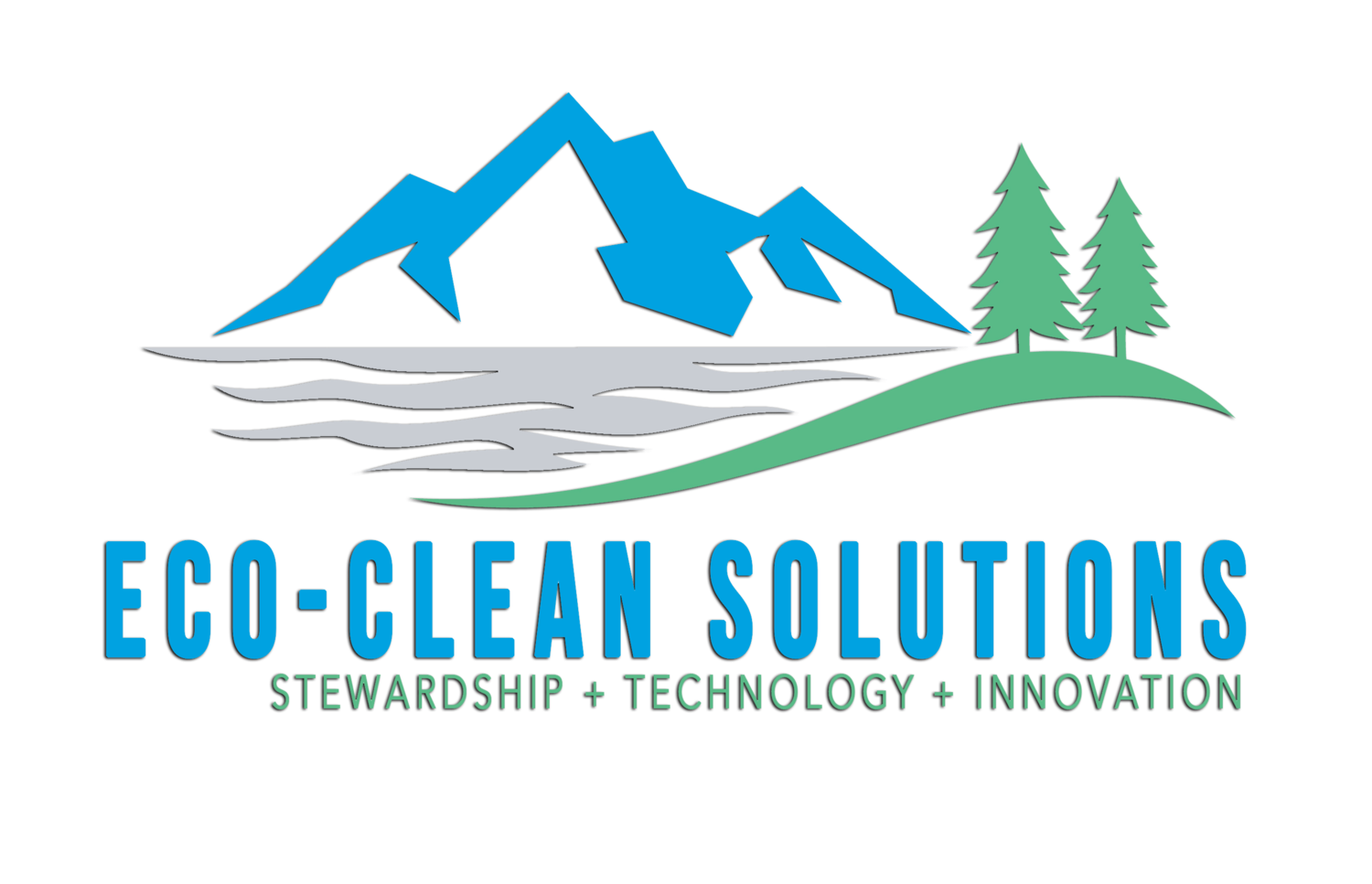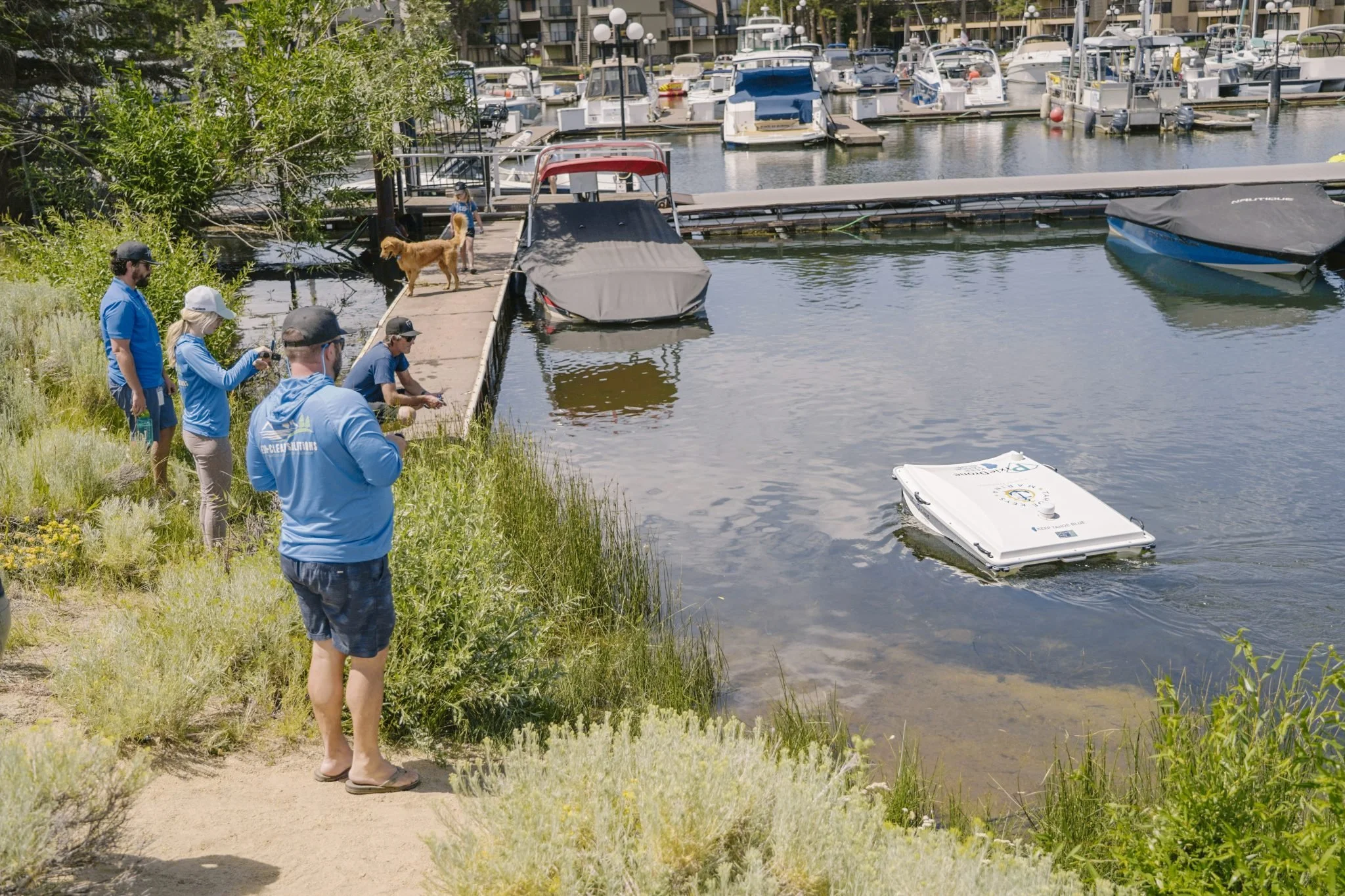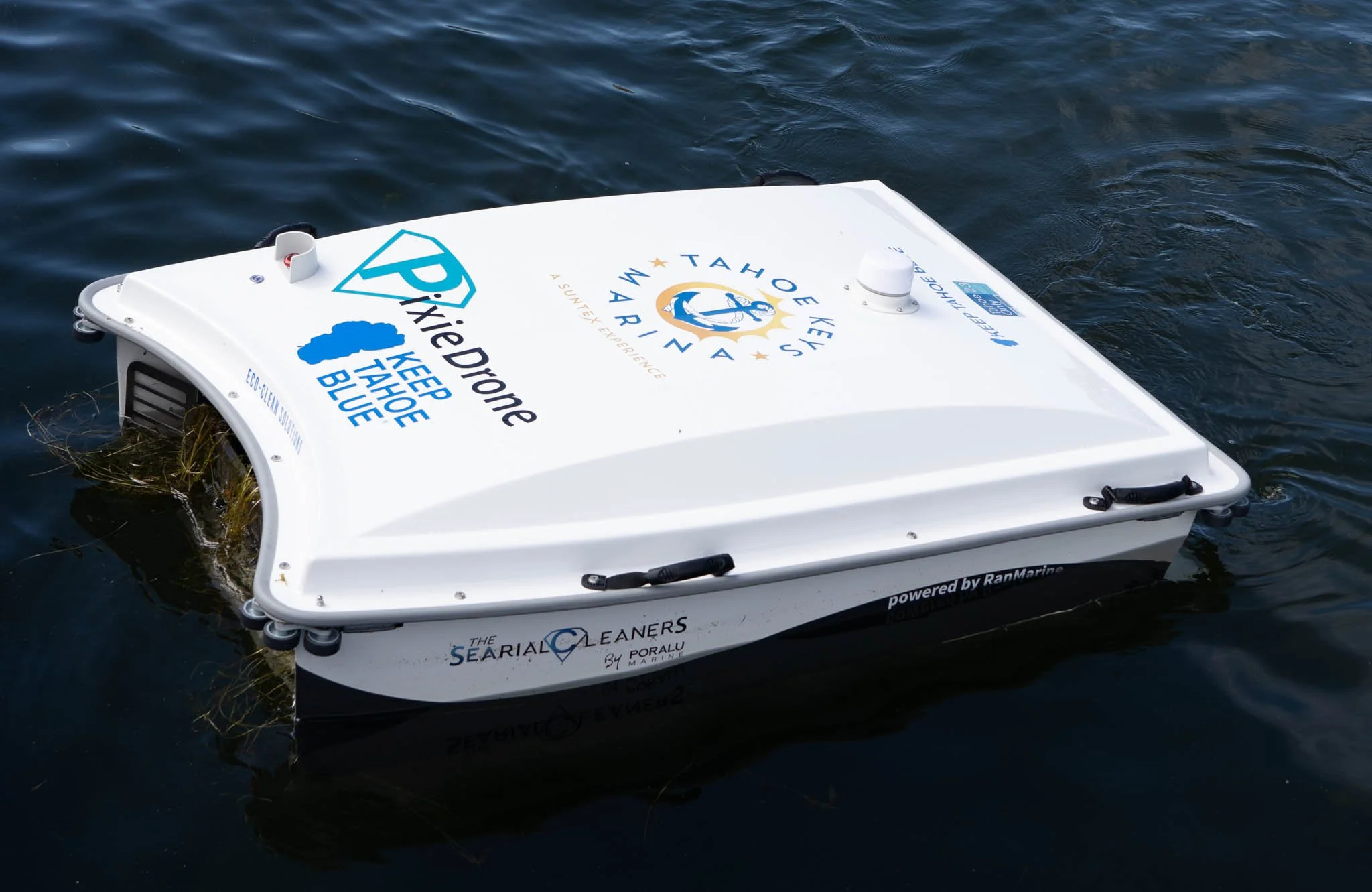Debut of Aquatic Cleaning Robot in Lake Tahoe
Meet the PixieDrone. An electric, autonomous motorized skimmer fighting the spread of invasive weeds & debris.
LAKE TAHOE, Nev./Calif.– At first glance, Lake Tahoe is pristine. But look closer. Aquatic invasive plants and trash threaten the unique water quality and clarity for which Tahoe is known. Floating debris like plastic litter can leach chemicals into the aquatic environment, while each individual fragment of an invasive weed represents a new potential infestation and further harm to the Lake’s fragile ecology. To Keep Tahoe Blue, the League to Save Lake Tahoe teamed up with ECO-CLEAN Solutions and the Tahoe Keys Marina to introduce an aquatic robot that glides across the surface, removing water-borne debris and aquatic weeds. Meet the PixieDrone.
The debut of the new PixieDrone aquatic robot introduced by ECO-CLEAN Solutions and Keep Tahoe Blue.
Image by: Kayla Bruni from the League to Save Lake Tahoe
“Together, we’re embarking on a mission to safeguard the pristine beauty of Lake Tahoe, combining cutting-edge technology with environmental stewardship,” said JT Chevallier, co-founder and chief strategy officer of ECO-CLEAN Solutions.
The PixieDrone is an electric, autonomous and programmable, motorized skimmer. As it moves through the water, the robot captures debris inside its open “mouth,” just like manta rays and humpback whales capture prey. Thanks to on-board Lidar technology (light detection and ranging), the PixieDrone avoids obstacles and adjusts its course in real time, allowing it to navigate between docks, pilings and boat slips as it cleans along a pre-mapped route.
The PixieDrone collecting harmful and invasive aquatic weeds in the Tahoe Keys Marina.
Image by: Katy Jo Caringer of ECO-CLEAN Solutions
“Traditional ways of protecting water quality in the marina simply weren’t enough,” noted Katie Linton, general manager of the Tahoe Keys Marina, the largest marina at Tahoe. “The PixieDrone is an innovative approach to solving a fundamental challenge – safeguarding our beautiful Lake. When the League and ECO-CLEAN brought this idea to us, we jumped at the opportunity to be part of the solution.”
The Tahoe Keys Marina is almost entirely infested with aquatic invasive plants. As boats leave the marina, plants are carried into the Lake, threatening to start new infestations when they settle to the bottom and resprout.
The PixieDrone will corral, collect and remove the harmful weeds, so they can’t spread. It can also clean up gas spills and be fitted with scientific equipment to assess water quality. The PixieDrone is currently being tested in the Tahoe Keys Marina where data is being collected and operations perfected for potential future use in other parts of Tahoe.
The PixieDrone skimming for invasive weeds and water-borne debris in the Tahoe Keys Marine.
Image by: Katy Jo Caringer of ECO-CLEAN Solutions
While Tahoe’s attraction as a travel destination increases, so too does the stress on its ecosystem. Traditional methods for tackling litter on the land and in the water are no longer sufficient. The PixieDrone is the first technology of its kind to be used on the West Coast. Like its robotic, beach-cleaning cousin BEBOT, the PixieDrone represents a novel approach to mitigating environmental impacts. The project partners know that these new tools, if they prove effective, will bolster time-tested techniques and elevate the standard for environmental protection at home in the Sierra and abroad.
“Conservationists and natural resource managers around the world see Tahoe as the blueprint for how to maintain public access while protecting the environment,” said Jesse Patterson, chief strategy officer for the League to Save Lake Tahoe. “For more than six decades, the League has used science, innovation and pilot projects to Keep Tahoe Blue. By sticking to that commitment to evolve, we will overcome new challenges and continue to make Tahoe an example for others to follow.”
Learn more about the PixieDrone at keeptahoeblue.org/pixie.



